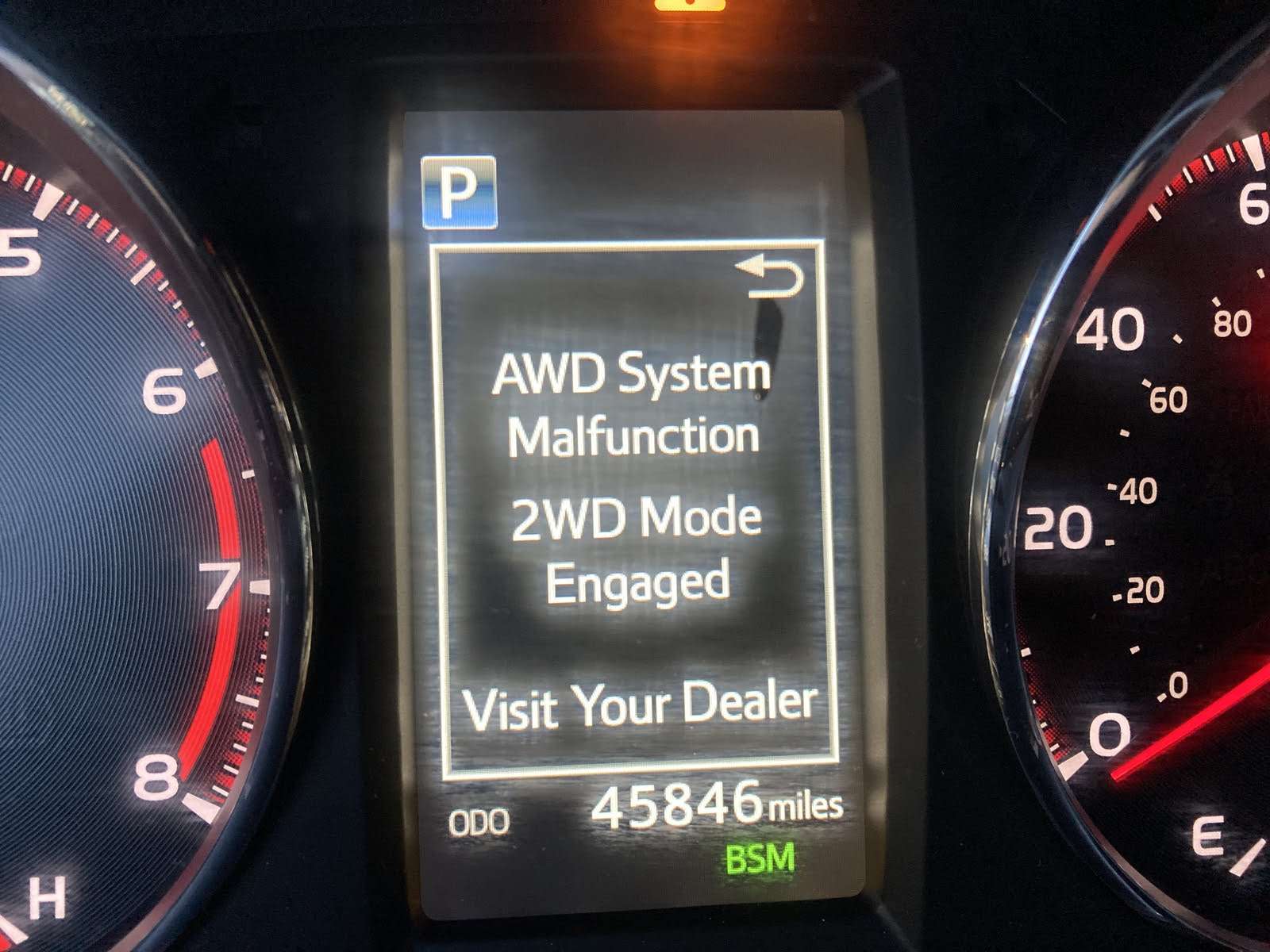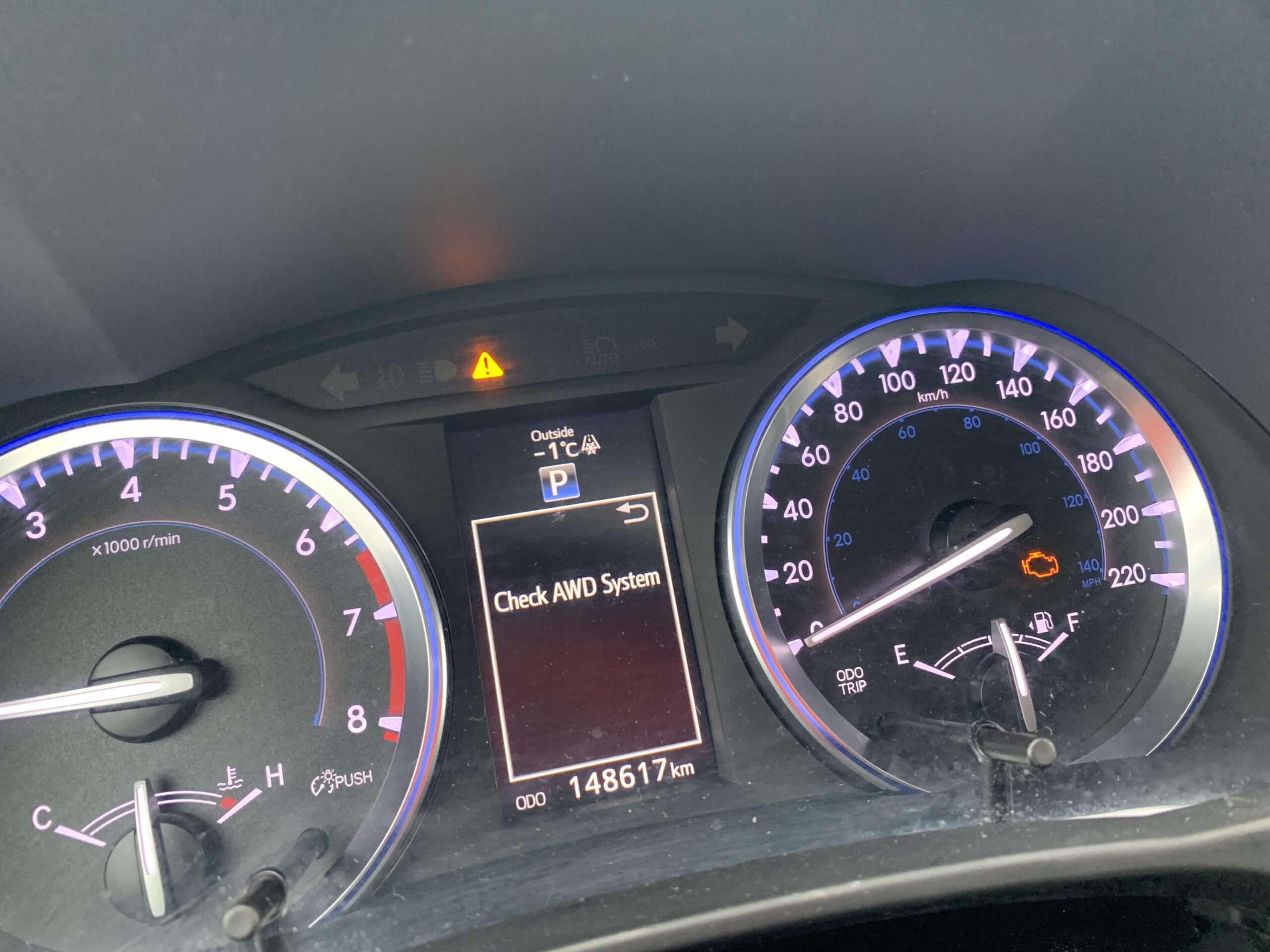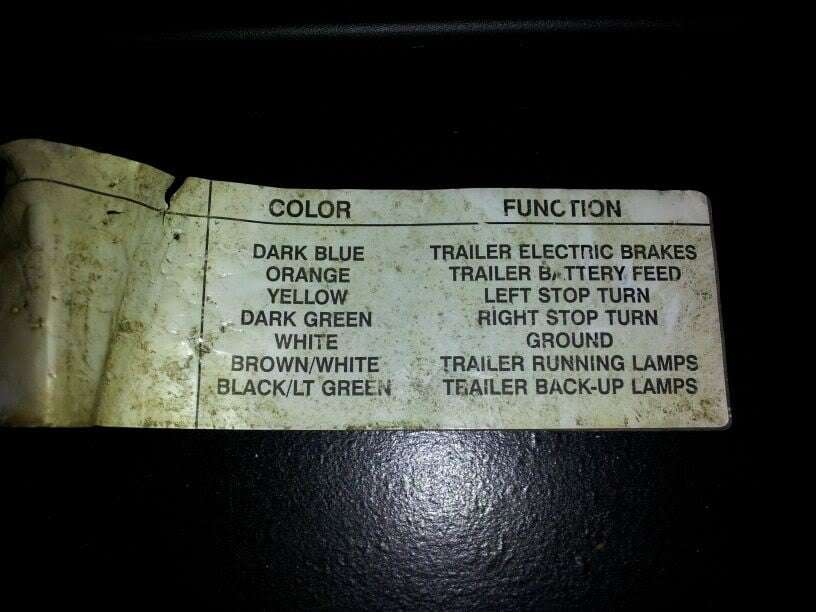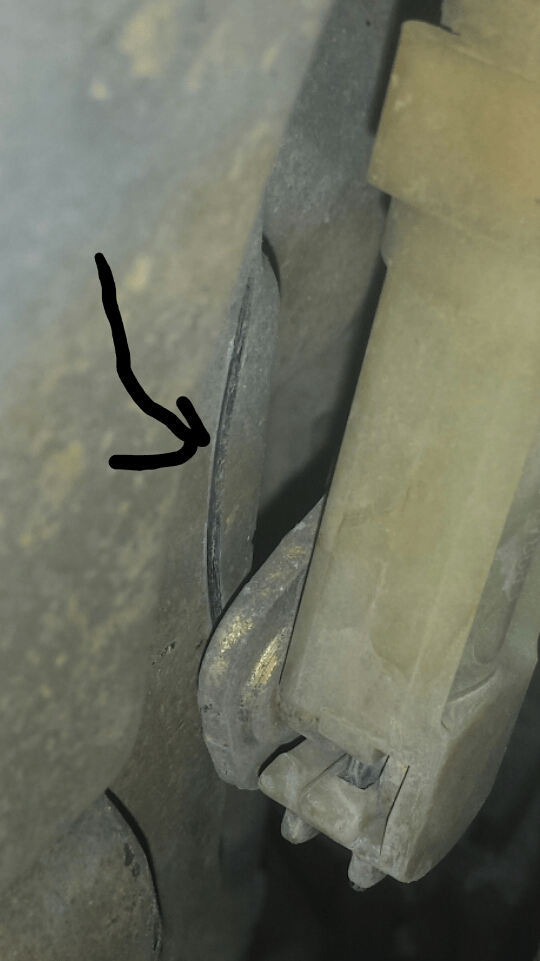To fix an AWD system malfunction in your Toyota RAV4, first try resetting the system by turning off the engine and restarting it. If the issue persists, check the tire pressure and sensors for consistency and functionality.
Addressing an All-Wheel Drive (AWD) system malfunction in your Toyota RAV4 can be critical for maintaining optimal vehicle performance and safety.
Owners may encounter a warning light or message indicating an issue with the AWD system, a feature designed to enhance traction by distributing power across all four wheels.
This quick guide provides initial troubleshooting steps that can be undertaken before seeking professional assistance.
Reliability and safety are paramount for Toyota drivers, and understanding how to tackle such malfunctions is essential.
Early detection and resolution of AWD problems ensure your RAV4 continues to perform as expected, keeping you confidently in control whatever the road conditions may be.

Credit: www.youtube.com
AWD System and Common Issues in Toyota RAV4
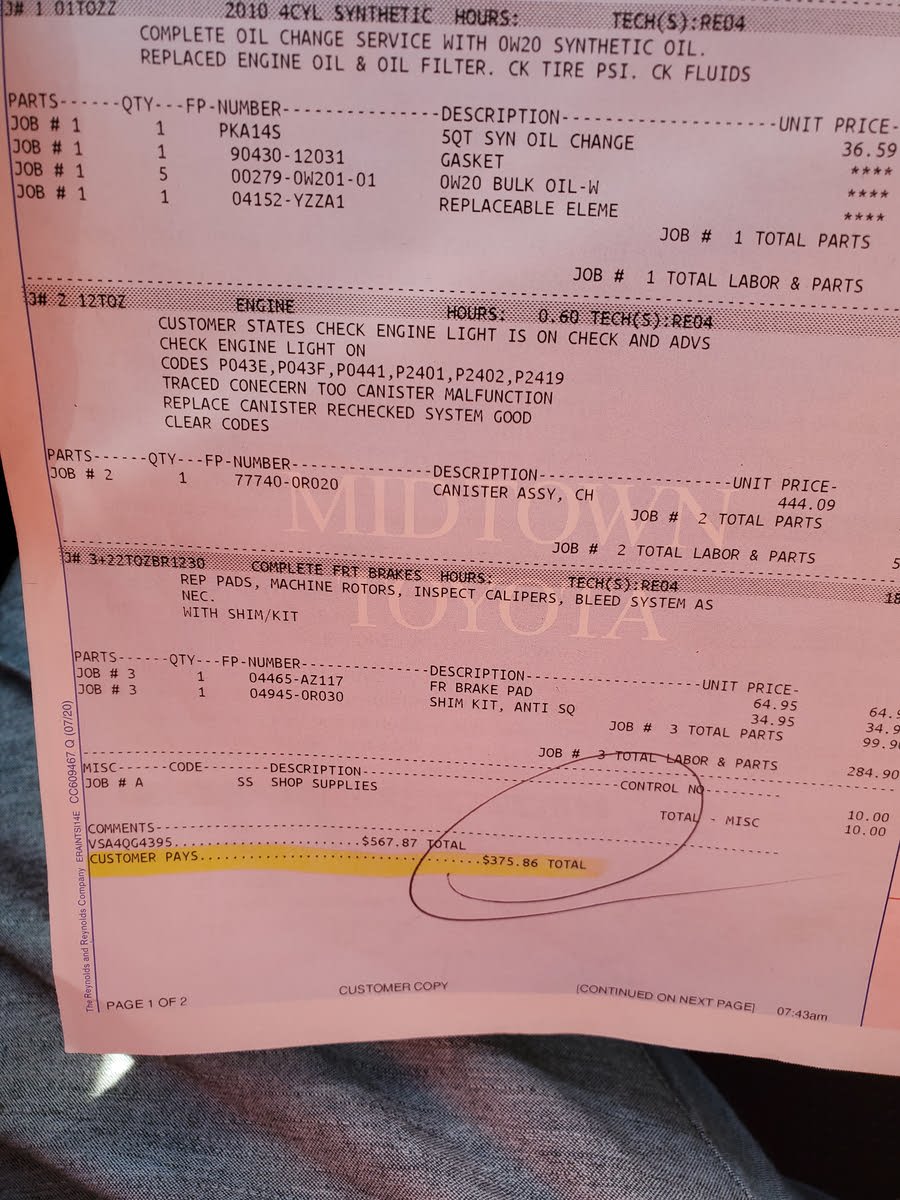
Credit: www.cargurus.com
Troubleshooting AWD System Malfunctions
Experiencing issues with your Toyota RAV4’s All-Wheel Drive (AWD) system can be troubling. The AWD system is designed to provide superior traction during adverse driving conditions, and when it malfunctions, it can lead to a compromised driving experience.
It’s crucial to address these issues promptly. This section of the blog post helps Toyota RAV4 owners identify and troubleshoot problems with their AWD systems.
Whether you’re dealing with dashboard warning lights or unusual driving patterns, we’ll walk you through a step-by-step guide for diagnosing common AWD problems, suggesting fixes for minor issues, and advising when it’s best to consult with a professional mechanic.
Step-by-step Guide On Identifying AWD Problems
Detecting the root cause of AWD malfunctions requires a systematic approach:
- Check the Dashboard: Begin with observing warning lights or messages – an illuminated AWD warning light can be your first clue.
- Listen for Unusual Noises: Sounds such as clunking, clicking, or whining from the drivetrain while driving might indicate an AWD issue.
- Monitor Performance: Take note of how the vehicle handles, especially on turns or slick surfaces, to identify any inconsistencies with the AWD functionality.
- Inspect Components: Visually inspect AWD components for physical damage or leaks. Look at the drive shaft, differentials, and transfer case.
- Test Drive Conditions: Conduct a safe test drive under different conditions to evaluate the AWD system’s engagement and responsiveness.
Common Fixes For Minor Awd Issues
Some AWD problems can be resolved with simple fixes:
- Fluid Levels: Ensure proper levels of differential and transfer case fluids. Low levels can cause inadequate lubrication and system strain.
- Tire Inspection: Uneven tire wear or incorrect tire sizes can disrupt AWD system operation. All tires should have identical tread patterns and be properly inflated.
- Reset the System: Sometimes, resetting the AWD system by turning the ignition off and then on can resolve electronic hiccups.
- Replace Sensors: Faulty sensors can trigger AWD warnings. Replacing damaged sensors often rectifies these false alerts.
When To Seek Professional Help: Understanding Your Limits
It’s critical to recognize when a DIY approach isn’t sufficient. AWD systems are complex and may need expert attention in certain scenarios:
- Diagnostic Equipment: Professional mechanics have specialized tools to accurately diagnose AWD system issues.
- Technical Repairs: Advanced problems with the transmission, differentials, or electronic modules are best handled by a certified technician.
- Warranty Considerations: If your RAV4 is under warranty, it’s advisable to let an authorized dealer undertake any necessary repairs to avoid voiding the warranty.
For persistent problems or if you’re uncertain about the issue, it’s wiser to engage a professional mechanic.
They can conduct thorough diagnostics and repair the AWD system efficiently, ensuring your Toyota RAV4’s performance and safety are not compromised.
Proactive Measures And Regular Maintenance
Proactive Measures and Regular Maintenance are crucial for ensuring the reliability and efficiency of your Toyota RAV4’s All-Wheel Drive (AWD) system.
By diligently following a series of routine care steps and addressing parts that may require upgrades or replacements, you can prevent most causes of AWD system malfunction.
Implementing a structured maintenance schedule helps detect issues early, saving you from expensive repairs and maintaining optimal vehicle performance.
Routine Maintenance Tips For Awd System Longevity
Maintaining your AWD system is not just about fixing issues after they arise. It’s about taking the necessary steps to prevent them from happening.
Here are some essential tips to keep your RAV4 running smoothly:
- Check your differentials and transfer case fluids regularly. Over time, these fluids break down and may lead to increased wear.
- Pay attention to tire maintenance. Since AWD systems rely heavily on the tires, ensuring they are properly inflated and rotated can prevent unnecessary strain on the system.
- Listen for unusual noises that may indicate early wear on AWD system components.
- Conduct visual inspections of the AWD system to look for leaks or possible damage to the driveshafts or other components.
Upgrades And Replacement Parts For Enhanced Awd Performance
Sometimes, maintaining the AWD system goes beyond routine checks and involves upgrading or replacing parts to improve performance:
| Part | Benefit | Recommended Interval |
|---|---|---|
| High-quality fluids | Ensures smoother operation and less wear | Check with manufacturer guidelines or every 30,000 miles |
| AWD coupling | Improves power transfer and traction control | Inspect during routine maintenance; replace as needed |
| Driveshaft | Better torque delivery and reduced vibration | Inspect every 15,000 miles; replace as per wear |
Developing A Maintenance Schedule: What To Check And When
A thoughtful maintenance schedule can be the backbone of your RAV4 AWD system’s health.
It’s not just about what you check but also when you check it:
- Weekly: Quick visual inspection and tire pressure check.
- Every 5,000 miles: Tire rotation and balance.
- Every 15,000 miles: Check AWD system components like the driveshaft and supporting hardware.
- Every 30,000 to 60,000 miles: Differential and transfer case fluid change, depending on driving conditions and manufacturer recommendations.
Consider more frequent inspections if you’re driving in harsh conditions or using your vehicle for off-roading. Always consult your owner’s manual for specific recommendations for your model and year.
Advanced Fixes And Solutions To AWD Malfunction
The Toyota RAV4 serves as a dependable companion for many adventurers and daily commuters alike, with its All-Wheel Drive (AWD) system providing excellent traction in various conditions.
Nevertheless, encountering an AWD system malfunction can be more than a mere inconvenience; it may signal a need for advanced troubleshooting and repairs.
As you confront this challenge, detailed knowledge is paramount for restoring your AWD system to optimal functionality.
Guidance On Resetting The Awd System
Sometimes, the solution could be as straightforward as resetting the AWD system. Before delving into more intricate fixes, try this simple process:
- Turn off the engine and wait for several minutes.
- Restart the engine to see if the AWD warning light clears.
- If the light persists, consulting the vehicle’s manual for a prescribed reset procedure is advisable.
Ensure all actions adhere strictly to the manufacturer’s guidelines to prevent damage to the system.
Handling Electrical Faults And Sensor Replacements
Electrical issues often lie at the heart of an AWD malfunction. Corroded connectors, blown fuses, or faulty sensors could disrupt the system’s operations.
To diagnose and fix:
- Inspect the AWD system’s electrical circuitry for any signs of corrosion or damage.
- Check and replace any blown fuses related to the AWD system.
- Run a diagnostic with an OBD-II scanner to identify any error codes that may point to a particular sensor issue.
Commence any replacements with OEM or equivalent quality sensors to ensure system integrity.
Mechanical Repairs: Coupling, Pumps, And Clutch
When facing persistent AWD malfunctions, consider the following mechanical components:
| Component | Issues | Action |
|---|---|---|
| Coupling | Wear or failure | Check for oil leaks or unusual noises and proceed with repair or replacement as necessary. |
| Pumps | Faulty operation | Verify pressure levels and fluid quality, replacing the pump if it fails to meet required specifications. |
| Clutch | Deterioration or damage | Examine clutch for signs of damage and replace if compromised. |
These components demand a professional touch, so contact a certified mechanic for precise diagnostics and competent repairs.
Understanding And Resolving Specific Error Messages
Understanding and resolving specific error messages on your Toyota RAV4 is key to maintaining its all-wheel-drive capabilities.
Various alerts may pop up on the dashboard, causing concern, but being equipped with knowledge can transform a moment of panic into a methodical approach to problem-solving.
This portion of the post is dedicated to helping you decipher the ‘Check AWD System’ alert, understand the common error codes through real-case studies, and learn how software updates and dealer-level diagnostics can play a pivotal role in keeping your RAV4 performing at its best.
Decoding The ‘check Awd System’ Alert
When the ‘Check AWD System’ message illuminates your dash, it’s not the end of the road.
This alert generally signifies a range of potential issues from simple sensor malfunctions to more complex transmission problems.
Start with the basics: ensure your RAV4 has the appropriate levels of transmission fluid and inspect for obvious signs of wear or damage.
Following these elementary checks, a diagnostic tool can provide specific trouble codes to help you pinpoint the issue.
Case Studies: Resolving Common Error Codes
Past incidents with the Toyota RAV4 reveal patterns in the AWD system’s hiccup. Here’s a closer look:
- P0351 – P0360: Issues with ignition coil circuits that can affect the AWD functionality.
- C1201: Engine Control System Malfunction – often leads to the AWD system being disabled to prevent damage.
- C1433/C1434: Malfunctions in steering angle sensors impacting the vehicle’s stability and AWD operation.
Resolving these common issues may entail replacing faulty sensors, reprogramming the ECU, or recalibrating essential components of the AWD system.
The following tales from RAV4 owners illustrate the diagnostic process and repair strategies that restored their AWD system’s integrity.
Software Updates And Dealer-level Diagnostics
In some scenarios, rectifying the ‘Check AWD System’ alert requires intervention beyond the standard OBD-II scanner’s reach.
Dealers are equipped with advanced diagnostic tools capable of delving deeper into the RAV4’s sophisticated AWD system.
Notably, up-to-date software is a crucial part of the AWD’s operation. Toyota periodically releases software updates to enhance system functionality and address known glitches.
Consistent communication with a certified dealer ensures access to these vital updates for your RAV4, safeguarding the AWD system against preventable malfunctions.
Conclusion And Preventative Advice
Understanding the intricacies of your Toyota RAV4’s AWD system is paramount for maintaining its performance and longevity.
Regular maintenance and timely interventions can ward off the inconvenience and potential danger of malfunctions.
This section hones in on the key takeaways from our discussion and provides practical guidelines to keep your AWD system in peak condition.
Summary Of Key Points On Fixing Awd Malfunction
- Diagnosis is critical: Deciphering the root cause of an AWD system malfunction is the first step to an effective fix.
- Check dashboard indicators: The AWD warning light is a tell-tale sign that should prompt immediate attention.
- Consult the manual: Your RAV4’s owner’s manual may offer specific insights and troubleshooting steps.
- Onboard diagnostics: Use an OBD-II scanner to read error codes that can guide your repair strategy.
- Professional service: For complex issues, seek assistance from a certified Toyota technician.
Practical Tips For Prolonging Awd System Health
- Scheduled servicing: Adhere to the recommended service intervals for your RAV4, found in the owner’s manual.
- Fluid management: Ensure that the differential and transfer case fluids are at optimal levels and conditions.
- Tire tread and pressure: Maintain even tire wear and correct pressure to reduce stress on the AWD system.
- Driving habits: Avoid aggressive driving that can overburden the AWD components.
The Importance Of Timely Repairs And Professional Consultations
Delaying repairs can exacerbate AWD system issues, potentially leading to more severe damage and higher costs.
A proactive approach to identifying and addressing abnormalities translates to a reliable, safe driving experience. When in doubt, enlist the expertise of certified professionals.
They can provide accurate diagnostics, offer quality repairs, and advise on preventive measures tailored to your RAV4.

Credit: www.reddit.com
FAQs Of Toyota RAV4 AWD System Malfunction
What Triggers Awd System Malfunction In Rav4?
The AWD system malfunction in a Toyota Rav4 is commonly triggered by faulty sensors, damaged wiring, or software issues. Regular maintenance can help prevent these problems.
How To Reset The Awd System On A Rav4?
To reset the AWD system on a Rav4, turn off the engine and remove the key for a few seconds. Then, restart the engine to see if the warning clears. If not, a professional diagnosis may be needed.
Can I Drive with the AWD Malfunction Indicator On?
Driving with the AWD malfunction indicator on is not recommended as it may signify a serious issue with the vehicle’s drivetrain. It’s crucial to address this promptly to avoid potential safety hazards or further damage.
What Are Common Awd System Malfunction Symptoms?
Common symptoms of AWD system malfunctions include warning lights on the dashboard, unusual noises during acceleration, and the vehicle pulling to one side. It’s advisable to get a diagnostic check if these occur.
Conclusion
Addressing a malfunctioning AWD system in your Toyota Rav4 need not be daunting. By following the steps outlined, you can tackle the issue effectively.
Remember, regular maintenance is key to avoiding these problems. Should concerns persist, contacting a professional is always wise.
Drive safely with a fully functional AWD system.
References:
